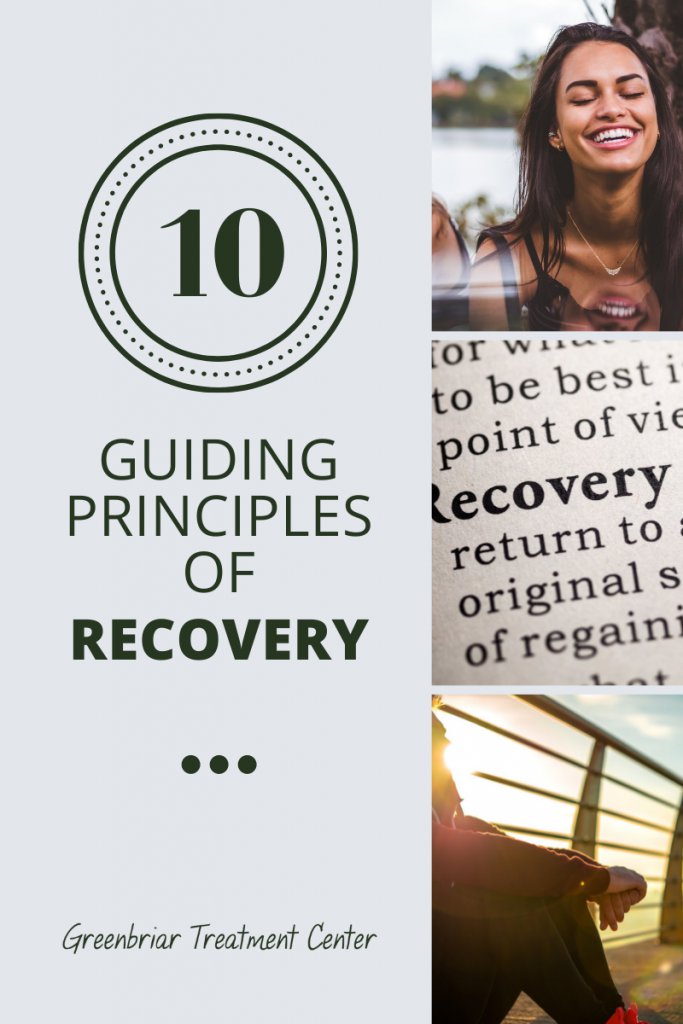
You may have wondered what does the word recovery really mean. The definition of recovery, found in the Oxford English Dictionary, is “a return to a normal state of health, mind, or strength,” or “the action or process of regaining possession or control of something stolen or lost.”
The Substance Abuse and Mental Health Services Administration (SAMHSA) defines recovery as “a process of change through which individuals improve their health and wellness, live a self-directed life, and strive to reach their full potential.”
These definitions show that recovery is a journey that takes time, consistency, and effort. Recovery from a substance use disorder does not occur over night and involves more than simply abstaining from drugs or alcohol. While everyone’s road to recovery is different, SAMHSA has identified 10 essential components of recovery.
1) Hope
Recovering from a substance use disorder requires a firm belief that recovery is possible. Hope in recovery involves trusting that it is attainable, despite any internal or external obstacles that may present themselves. Hope is often the catalyst for change and the beginning of the recovery process.
2) Self-direction
The path to recovery begins with an individual decision and commitment to begin a new way of life. Each person must determine their own goals in recovery and take action to find the appropriate avenues to support their goals. Self-direction in recovery empowers the individuals to take responsibility for their recovery and regain control of their lives.
3) Many Pathways to Recovery
Each person comes from a different social/cultural background and has varying strengths, preferences, and goals that will impact their individual pathway to recovery. Recovery approaches should be highly individualized and focus on the individual’s needs – ultimately taking into account their strengths, available resources, and intrinsic value to foster a supportive environment.
4) Holistic
A recovery plan should address all facets of an individual’s life – mind, body, spirit, and community. These elements can include behavioral healthcare, housing, medical care, employment, transportation, or community services. The range of available resources should be integrated into the recovery plan.
5) Peer Support
Peer support in recovery is a valuable asset. Peer support groups have the ability to provide supportive feedback, usually from lived experienced, and offer a vital sense of belonging for those in recovery. Additionally, peer supports groups provide social role-modeling that encourages the development of recovery supportive behaviors and attitudes. For many, regular attendance at peer support groups or mutual aid meetings plays a vital role in long-term recovery.
6) Recovery is supported through relationships and social networks
Developing and maintaining relationships with people who support recovery, provide support, and encourage hope are crucial to recovering individuals. These relationships will also enable the individual in recovery to let go of high risk behaviors or roles and develop a more fulfilling, well-rounded lifestyle.
7) Recovery is culturally-based and influenced
A person’s culture and cultural background should play an important role in their individual recovery pathway. Recovery plans should address any specific needs, values, traditions of the individual and be highly personalized.
8) Recovery is supported by addressing trauma
Experiencing trauma often precedes the onset of a substance use issue. Services and supports utilized during the recovery process should be capable of providing trauma-informed care.
9) Recovery involves individual, family, and community strengths and responsibility
Family members, community supports, and individual strengths all serve as the foundation of recovery. It is important that individuals take responsibility for their own recovery process, but should also feel supported by those around them.
10) Recovery is based on respect
Entering recovery takes a great deal of courage. Self-acceptance, a positive sense of identity, and confidence are important components of recovery. Communities and other outside systems can also acknowledge the strength it takes to enter recovery but working to lessen discrimination and protect individual rights.
Sources
Substance Abuse and Mental Health Services Administration. (2012). Working Definition of Recovery: 10 Guiding Principles of Recovery. U.S. Department of Health and Human Services. https://www.samhsa.gov/recovery
